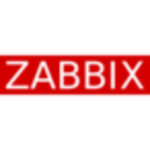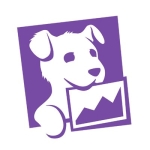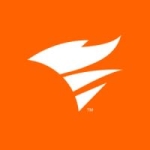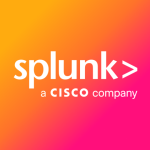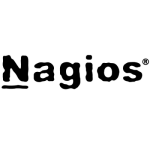What is our primary use case?
We use Auvik mainly to monitor switches and firewalls but also use it to monitor VMware. We also utilize the extra monitoring that Auvik provides for desktops.
How has it helped my organization?
Auvik gives us better insight into devices and helps us troubleshoot better because we can compare configurations. Auvik also gives us better and faster alerts on devices. If a client has a switch that's down, we tend to be able to find out and react to it before the client has to reach out to us, which is always a great benefit.
When internet connections are down, we can find out quickly, especially after hours or over the weekend, and can make sure that everything is working before the staff come back in to work for the day. We can make sure that everything is back up and running. The number of alerts and the granularity of the alerts mean that we can pinpoint on a particular switch the specific port that is causing the issue.
The other great aspect that has come in handy a few times for us is traffic monitoring. We can see if someone's internet connection is running slowly and see exactly where the traffic is going. We can zero in on what the traffic is, which user is using the traffic, and what switch it's going through. The information that Auvik gives us helps us troubleshoot, which is a lot of what we do. Auvik has helped us make sure that the company continues to run efficiently.
What is most valuable?
The most valuable feature is that it will back up the configuration and it will keep multiple copies of it. If a change is made to the configuration by someone else in my company, for example, and something goes wrong, I can bring up the previous configuration and the current configuration, and it will show me exactly what's different. It greatly reduces the time it would take to troubleshoot because I can pinpoint exactly what was done. I can then either change whatever it may have been or roll back the change.
Auvik's monitoring and management functions are easy to use. For certain devices, switches, or routers, you have to make sure that SNMP monitoring is enabled on the device. Once it's enabled, Auvik is extremely simple to use. I've worked with other monitoring software in the past, and it has taken weeks to configure all of the alerts and get everything monitoring the way we want it to. With Auvik, once the device is capable of pushing the logs, it's simple. Auvik also has many out-of-the-box notifications that are pre-built and that automatically monitor. Setting up a switch or a router is simple and quick.
Auvik provides a single integrated platform and two different ways to install it. If you have VMware, you can put an appliance right into your VMware for monitoring. If you have a Windows server, you can install the agent, and it crawls the network and finds everything easily. Having a single integrated platform is important for our organization because we don't want to have 10 different programs or applications and have to go through each one to differentiate which one is using what and where. We want to be able to have one central location where we can find everything we need.
Before we switched to Auvik, we used three or four different applications to monitor different functions. Some were designed to monitor VMware, some were for desktops, and some were for switches and firewalls. Using multiple products was a pain, and none of them actually had as many features as Auvik does now. We have saved quite a bit of time by switching to Auvik. We have central alerts, and we have functions pre-built now that we truly understand what it takes to get a new client configured. We just added a client in the past few weeks, and all we had to do was throw the agent on a machine, let it figure everything out, and put in the passwords for the devices into Auvik. That was it, and Auvik took care of everything else. It definitely saves a lot of time, especially in terms of the configuration of the monitoring.
We can visualize the network mapping/topology of our organization with Auvik. It's really nice that it breaks it all out. When we have clients that have 40 or 50 switches across multiple buildings, the map will be very large. In these cases, it's very difficult to zero in on the map; however, we will still be able to pinpoint which devices are connected to which switch. If a particular switch is down or having issues, we'll know exactly which segment of the company is going to be affected by that. We'll know if there are network loops because certain things are interconnected.
The ability to not have to try to manually figure out where everything is and just be able to pull up a map and identify a switch that is connected to it is great. It makes creating a network map for new clients much simpler. If we go into a new client, we can run Auvik for 24 hours, and then it will bring up all the switches and all the devices connected to the switches. It will show where the firewall is as well. It has definitely taken away the time spent creating the network maps, which were never one of my favorite things to create in the first place.
Auvik helps keep device inventories up to date for us, especially with regard to switches, routers, and firewalls. Even if we're the ones who put one of these in, we don't necessarily have to go write down the serial number. We can get it configured, put it in, and then go back into Auvik to make sure that it's being picked up and monitored. We can also check whether we have all the information right there for us so that we can get everything right out of Auvik. If the switch gets replaced and it goes directly to the client, we don't necessarily need to see the switch because we know we can pull out everything we need right from Auvik to update our inventory of the devices for that particular client.
Having a stronger inventory and the flexibility to more easily find particular aspects allows us to delegate certain low-level tasks to junior staff. Because we can pinpoint exactly where particular devices are easily and quickly, we are able to delegate more high-value tasks such as important firmware updates so that patches are done as quickly as possible. It makes it much simpler because we know exactly which clients need the update. We can use Auvik from the portal to remote directly into that device to apply the firmware that we need.
Having Auvik keep our device inventories up-to-date takes away the need to have someone dedicated to recording that information or keeping the information up-to-date. We can just log into Auvik and get it. It's much faster, and we're not wasting time on doing something that, although is very important, takes away from us having the ability to do other much more important tasks.
The time-to-value is worth every penny. The speed at which Auvik alerts us when there are problems with switches or firewalls, or when switches or a segment of a network is down is worth it in and of itself. Then, you have the added benefits of VMware monitoring at no additional cost, configuration backup, and log storage. The cost of Auvik for the amount of time that can be saved and the ability to look good to a client because you're on top of everything is well worth it. The amount of time that Auvik has saved us is certainly worth its cost.
We have definitely seen a reduction in mean time to resolution. Auvik is very quick to alert us and give us the information we need based on the client and the switch. We can log into the Auvik website and get more information so that we can be more on top of things. There have been several times when we've had a switch go down on the client in the middle of the day, and we have been able to reach out to them to let them know that the switch is down and that we're working on it before they even realize that the switch is down. It allows us to get to a problem much faster and also helps us to look better to our clients. Prior to Auvik, if there was a problem we typically found out when the client reached out to us. The client typically would find out within 10 to 15 minutes that there was a problem and then reach out to us. So, it would probably be 15 to 20 minutes before we would know about the issue. Whereas now, we know about an issue within three to five minutes, so we're on top of it. Auvik has cut down our time by 10 to 15 minutes.
What needs improvement?
The biggest area for improvement is the speed of the website because it's not something we host. Each of our clients hosts an agent that gathers the logs and pushes it up. The website can be slow to click around in or click through.
One other area for improvement is a central location to figure out what devices are not having their configuration backed up or are not monitoring a certain item. Right now, you have to click into each switch, router, or firewall and then just make sure that all of the boxes are checked for backup and monitoring. This, technically, should already be happening as soon as a switch is installed. However, for auditing reasons and to verify that no one missed anything, having one place where you can click and see a list of all the switches, what's missing, and which switches are not doing what in the realm of backup or monitoring would be great.
For how long have I used the solution?
I've been using it for three years.
What do I think about the stability of the solution?
The stability is good. Auvik is hosted on AWS, so if AWS is having issues, then Auvik will as well. However, the few times that I have remembered them having issues, they have been resolved quickly. We've seen no ill effects from any of the times they've had issues.
What do I think about the scalability of the solution?
It appears to scale very easily. We have small clients and large clients, and Auvik handles them all very well. It doesn't seem to have any issues with any changes we throw at it.
How are customer service and support?
Auvik's technical support is great. We don't have to reach out to them very often because we don't have that many issues. However, the handful of times that we have reached out for assistance with configuration they've always been easy to work with and helpful.
Technical support staff even reach out to us periodically and ask if there's anything that they can help us with. Auvik's support has been top-notch, and I'd give them a ten out of ten.
How would you rate customer service and support?
Which solution did I use previously and why did I switch?
We used a ManageEngine monitoring solution for monitoring switches. It may have come a long way by now, but the downside at the time was the sheer time it took to get it to monitor what you wanted it to. It did not have a configuration backup or the ability to check configurations and what was different between two particular configurations.
We had a big client we had just taken over who had quite a few switches and devices on the network, and we figured that it would be the perfect time to give Auvik a test run. We really liked the fact that Auvik would monitor, back up configurations, and map everything out.
We wanted the ability to retain logs for more than 15 days, and Auvik implemented the ability to push logs out to Azure or AWS for retention. You can get your own bucket of storage, connect it, and keep logs for as long as you like.
One of the reasons why I like Auvik's cloud-based solution is that it's easier to get alerts. If an on-premises network monitoring solution goes down, it's much harder to get alerts, whereas the cloud solution can tell you that it's down because it can't see it. You may get a false alert that it's down, but it's better to have a false alert and look into it than it is to figure out that it's a true alert. Alerting with a cloud solution can be a little bit better than that with an on-premises solution.
The other aspect that's nice is if hardware crashes on-premises because of a ransomware attack, for example, and I have my logs stored in a cloud solution such as Auvik, I can still get to those logs to figure out what happened or how the attacker got in and do some forensics work. Whereas if the logs were being stored on-premises, I would probably have lost them all.
How was the initial setup?
The initial setup was very straightforward. You have to go into Auvik, create a customer, get the agent to install, pop the agent onto a machine, and give it credentials so that it can scan. You let it run for a little bit, then you add your SNMP credentials into Auvik so that it can log into the devices, and you're done.
You can do more configurations to make sure that the backup feature is turned on or enable traffic insights for each switch. These are just a couple of clicks on the mouse. The initial setup and onboarding of new clients have been simple and quick. We've never had any problems.
We implemented Auvik out of the box. The network mapping started to populate within 10 to 15 minutes after the collector was implemented. How long it may take to truly grab everything depends on the size of the network, but typically, within an hour you will have a pretty solid understanding of the network via the map. If you were on-site with a new client, you could install the agent with their approval and have a meeting about the different aspects of what you're going to do for them. By the time the meeting is finished, you would have a pretty strong understanding of the entire network and what devices are out there.
What about the implementation team?
We deployed it with the help of someone from Auvik.
What's my experience with pricing, setup cost, and licensing?
Given the types of alerts and the different aspects of Auvik, I think it's worth the cost that is associated with it. I don't think the cost is terribly high. The infrastructure is the core or the backbone of a business. If it goes down, then the business stops. You have to decide how much money you're going to lose if your network is down and you can't figure out why for hours or days versus what Auvik would cost you a month.
What other advice do I have?
If you want to evaluate Auvik, give it a couple of days at the minimum. If you have any questions, reach out to their technical support. Ask them how to do things and how things work, or watch some videos on it. Auvik has a lot of functionality, but don't get overwhelmed. Look at each one separately, spend some time on each one, and just give it some time to sink in and see what it can do.
Overall, I would rate Auvik at ten on a scale from one to ten.
Disclosure: PeerSpot contacted the reviewer to collect the review and to validate authenticity. The reviewer was referred by the vendor, but the review is not subject to editing or approval by the vendor.





